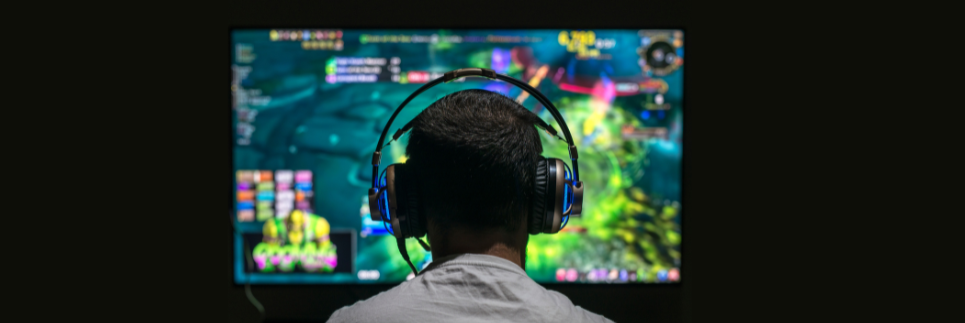If you are a teacher, why did you get into teaching?
Take a minute to think about that. Actually, stop reading right after this paragraph and think back to the time when you decided that you wanted to be a teacher. What was the event, person, or decision that made you want to get into education?
Can you remember what it was?
For me, part of it was that I had a couple of influential teachers growing up. The real turning point, though, was the year I spent working as a special education assistant. I finished university with a degree but without a clue — at least, in terms of what I was going to do with my life long-term. Newly married and desperately needing a career change to get away from a verbally abusive boss, I was fortunate enough to find a job as a special education assistant in a Grade 3 classroom.
I took the job because I was badly in need of a change; I took away a new life path.
I spent the year working with a young boy with a complex and unique set of special needs, and over the year, he and I created quite a bond. I remember a lot of laughter, a lot of Captain Underpants books, quite a few tears, occasional vomit clean-up, and a lot of therapies that I was able to turn into games to keep them fun. By the end of the year, the special education department saw how well he was doing and decided he did not need as many hours of EA support. Unfortunately, that meant my hours would be cut and I would have to say goodbye.
That year taught me a lot, though. I spent nine months observing teachers and the bonds that they created with their students. Songs, math games, and storytime were all fields ripe for learning, and as I watched carefully from the back of the classroom, I started to think, “Yeah, I think I could do this.”
The next year I went back to school to get certified. The year after that, I was at the front of my own classroom.
Disconnected
After several years working as a Grade 6 teacher, a long and winding road led me to working as an online teacher. This was hardly what I had in mind when I was sitting in that Grade 3 classroom all those years before. True, I did not have to clean up vomit, the commute from the kitchen to my office was fantastic, and my overall stress level plummeted. I struggled, though, to keep that initial passion for education lit.
- My inbox was relentless.
- I was starting to feel like all I did was mark assignments.
- I was finding it hard to find kind ways to say, “This is one of the worst pieces of writing I’ve ever seen.”
But most of all, working at home on my own, I felt disconnected; my students were just names to me. I knew them by their writing, but I did not know them personally, and they certainly did not know me.
If I was going to keep doing this long-term, I was going to need to find another way to be an online teacher.
Because of this initial malaise, my practice has changed significantly in the last few years. I still have a lot of growing to do, but here are a few ways that I have been able to keep my passion for education lit while teaching in an online context.
1) Get to know your students at the beginning of a course
My first move was making it a requirement for all my students to meet me on Zoom before they start their course. A recommended meeting was simply not enough, as most students would skip it and I was too busy to chase them down. Now, the course content is closed to students until after I have met with them one-on-one on Zoom.
In that meeting, I spend 15 minutes getting to know them, asking about their families and their interests and hobbies. I also tell them about myself, letting them know that I am friendly and approachable. I use self-deprecating humour a lot in this meeting, because I want students to know that I do not take myself too seriously, and making them smile or laugh will show that I am trustworthy. I also make sure to take notes on things they care about, such as gymnastics, horse jumping, music, or paintballing. Then, when I meet with them again later in the course, I can peek at my notes, remind myself of what they’re interested in, and ask them about those things.
2) Set up regular check-ins
If I only see my students once at the beginning of the course, it is helpful, but it will likely not turn into a relationship that will have any impact on them. I also have a midpoint check-in set up, and the second half of the course is not available to them until they have that check-in. This gives me a chance to make sure no assignments have been missed, to check that they are on track to finish according to their desired pace, and to answer any questions they may have. The real purpose, though, besides all those important practical details, is to reconnect with students and let them know that I am with them and for them and cheering them on to be successful in the course. A final required meeting before the final project helps me set students up for success on the summative assessment for the course.
3) Setting up group interactions
One thing I wish I could do more of is teaching online synchronous courses. For one year, I taught a Social Studies 10 course in a synchronous model, meeting once a week with students over Zoom. This was not quite like a classroom experience, and how I would do this differently in the future would be a topic for another blog article, but by the end of the year, I had made a meaningful connection with a lot of those students. Several students even wanted to sign up for other courses that I taught the next year. More than that, though, I could see a huge amount of growth in the students. We laughed a lot as a group, we wrestled with some really profound questions together, and I felt that spark of passion for education begin to burn again.
Another way to do this is to have drop-in Zoom sessions on topics of interest that students would be required to attend at least two of per year. A social studies teacher could have a monthly drop-in session called “This Month in Politics.” A math teacher might host a Thinking Classroom activity not directly tied to a specific piece of the curriculum. A science teacher might do a monthly live demonstration of a science experiment students cannot do at home.
4) Notice growth
One of the things that made me think, “Hey, I could be a teacher,” was the feeling I got when the light went on for a student and they “got it.” I felt this a lot as a music teacher, when a guitar student was finally able to master a difficult strum pattern or a piano student was finally able to play a difficult passage perfectly. As an EA in a Grade 3 class, I remember watching as a student was finally able to read fluently for the first time or finally mastered their times tables. Student growth is like gasoline on the sparks of an educator’s passion.
When teaching an online course, this growth can be more difficult to keep track of, but noticing it is critical for both me and for the student. For example, a lot of my Social Studies 10 students came into my course completely unable to write a properly formatted paragraph. I spent quite a bit of time going over that, showing them videos, giving them examples, and giving direct, anecdotal feedback on assignments that were not up to par. By the end of the year, I was definitely able to notice growth, so I made a point of sharing that. “Hey, I noticed that your paragraphs are looking fantastic. I can tell that you’ve really worked hard on that skill this year. Keep it up!”
5) Don’t subcontract one-on-one support
As a busy online teacher, it can be tempting to send students back to the course videos or to a student support center. There are a few reasons why I think I should be the one taking the time to do this. First, if they did not understand the concept the first time from the video, sending them back to watch it again may not be helpful. A different approach might be needed. Second, as important as EAs and student support center staff are, they do not know the content of my courses as well as I do and they do not know what I am looking for as well as I do. Third, if I am able to help students “get it,” it’s another chance to build a connection. Connections and relationships fuel the fire of passion for teaching. Set up the video call, take the time to walk students through what they are struggling with, then revel in their success.
Sounds like a lot of work…
…and it might be if your online course also has too much marking for you to do. Take a look at your current course material and ask yourself the following questions:
- What marking can I remove from this that would free me up for one or two of the intentional touch points described above?
- Could I automate some of the grading?
- Could I find a course that is designed with minimal assessment busywork?
Chances are that removing an assignment here or a short essay there will not just reduce your marking load but will also make your course more enjoyable for students.
Still, even if it ends up that a little more time, effort, and emotional investment are needed, I have found that this is worth it if it means that my students learn better and I am able to build a stronger relationship with them.
At the beginning of this article, I alluded to another inspiration for me becoming a teacher: a particularly impactful teacher I had in Grade 6. He spent time helping me develop my character, and I credit him with being an amazing role model that I, as an 11-year-old, really needed. Those kinds of transformational relationships cannot happen if we keep our students at a distance.
Making those relational connections is what will make the greatest impact on our students and on us. It just might be the best way to keep the fire of our passion for education burning.
About the Author






